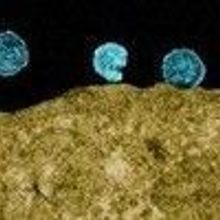Login
Subscribe404
Not Found
Is this what you were looking for?
tag object recognition microbiology evolution disease medicine

The Inside Guide: The Gut Microbiome’s Role in Host Evolution
Catherine Offord | Jul 1, 2021 | 10+ min read
Bacteria that live in the digestive tracts of animals may influence the adaptive trajectories of their hosts.

Directed Evolution, Phage Display Nab Chemistry Nobel
Catherine Offord and Kerry Grens | Oct 3, 2018 | 4 min read
The 2018 award goes to Frances Arnold, Gregory Winter, and George Smith.

Q&A: Gathering Diverse Microbiome Samples
Katherine Irving | Nov 3, 2022 | 8 min read
Cofounders of a microbiome biobank speak with The Scientist about their new partnership with nonprofit OpenBiome and how to ethically work with donors.

Editorial: When Will This Pandemic Officially End?
Bob Grant | Mar 11, 2022 | 4 min read
And does it even matter?

A Pioneer of The Multiplex Frontier
Rashmi Shivni, Drug Discovery News | May 20, 2023 | 10 min read
George Church is at it again, this time using multiplex gene editing to create virus-proof cells, improve organ transplant success, and protect elephants.
John Marchalonis dies
Kelly Rae Chi | Jul 17, 2007 | 4 min read
The researcher was one of the first to identify the molecular basis of immune recognition

HIV Evolves Vulnerability
Sabrina Richards | Oct 21, 2012 | 3 min read
In mutating to evade immune detection, HIV becomes susceptible to detection by different antibodies, suggesting new strategies for vaccination.

Of Cells and Limits
Anna Azvolinsky | Mar 1, 2015 | 9 min read
Leonard Hayflick has been unafraid to speak his mind, whether it is to upend a well-entrenched dogma or to challenge the federal government. At 86, he’s nowhere near retirement.

Who Sleeps?
The Scientist and Jerome Siegel | Mar 1, 2016 | 10+ min read
Once believed to be unique to birds and mammals, sleep is found across the metazoan kingdom. Some animals, it seems, can’t live without it, though no one knows exactly why.
Life Science
Simon Silver | Jan 7, 1990 | 6 min read
Department of Microbiology & Immunology University of Illinois Chicago - Through cloning and sequence analysis, researchers have identified the primary gene of the hereditary disease muscular dystrophy, thus leading to the characterizing of the primary protein product. Deletions contributing to an absence of the polypeptide dystrophin (0.002% of total muscle protein and 3,685 amino acids long) on the inner surface of the plasma membrane appear to be the primary cause for two types of muscul